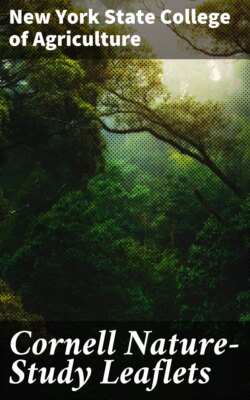Читать книгу Cornell Nature-Study Leaflets - New York State College of Agriculture - Страница 33
Sixth Grade.
ОглавлениеHaving studied in the previous year the uses of different parts of the plant, the pupil will be fitted now to take up the general subject of weeds.
Take some common forms and let the pupils observe that they grow where other plants do not grow, or that they drive out other plants; then study the special reasons why each kind of weed is able to do these things. Botany, Bailey, pp. 214-222; Elements of Botany, pp. 196-205.
During the autumn another subject for study in this grade is Mushrooms. Lead the pupils to see how these flowerless plants produce seed, and let them bring in as many forms as possible. Do not try to teach which mushrooms are poisonous. Lessons with Plants, p. 347; Mushrooms, by Atkinson.
Winter work.—Evergreen trees. Cornell Teachers' Leaflet, No. 13 (No. XXXIII, this volume).
Spring work.—The spring work may well be the making of a calendar for trees and plants. Keep a record each day of the leafage of plants, the appearance of weeds, and the appearance of blossoms of fruit trees and all common flowers. Record which appear first, leaves or blossoms.
This work will be good preparation for the study of the "struggle for existence," which comes in the next grade.
